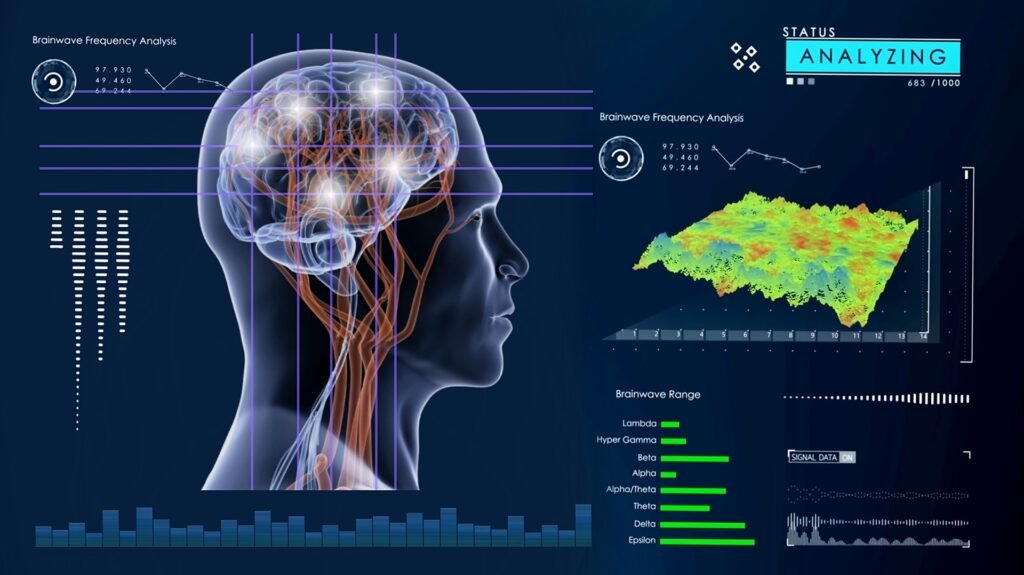Man-made brainpower (computer based intelligence) has quickly turned into an extraordinary power, reshaping ventures and impacting our regular routines. From medical services to fund, and then some, artificial intelligence is further developing proficiency, empowering new capacities, and taking care of complicated issues. This article dives into the current and arising uses of simulated intelligence, investigates the various kinds of computer based intelligence, features the moral contemplations it brings, and offers a correlation table of man-made intelligence innovations. Furthermore, we’ll introduce featured discussions in a talk table for simple reference.
Understanding Artificial Intelligence: What is AI?

Artificial intelligence alludes to the advancement of machines and frameworks fit for performing errands that would normally require human knowledge. These assignments incorporate visual discernment, discourse acknowledgment, direction, and language interpretation. Simulated intelligence frameworks gain from information, adjust to new data, and further develop execution after some time, making them significant in applications going from robotization to information examination.
The field of computer based intelligence includes different subfields, each zeroing in on various parts of knowledge, from straightforward mechanization (like rule-based frameworks) to cutting edge profound learning calculations that impersonate human perspectives.
Types of Artificial Intelligence
To comprehend computer based intelligence’s true capacity, investigating the essential sorts of artificial intelligence, each addressing various degrees of intricacy and autonomy is fundamental.
1. Artificial Narrow Intelligence (ANI)
ANI, otherwise called frail simulated intelligence, is intended to proficiently play out a solitary undertaking. Models incorporate voice associates like Siri and Alexa, proposal calculations on Netflix, and picture acknowledgment programming. ANI is presently the most broadly utilized type of man-made intelligence, zeroing in on unambiguous applications as opposed to human-like general knowledge.
2. Artificial General Intelligence (AGI)
AGI, or solid man-made intelligence, intends to have human-like insight, understanding, and thinking abilities across different errands. AGI could hypothetically learn and apply information across various areas, however it remains for the most part hypothetical at this stage. Accomplishing AGI would require significant progressions in AI and computational power.
3. Artificial Superintelligence (ASI)
ASI addresses a degree of insight past human capacity, including machines that outperform our mental capacities. While ASI could bring extraordinary developments, it likewise raises moral worries with respect to control, wellbeing, and human importance. The idea of ASI stays speculative, however it’s a well known subject in cutting edge conversations about simulated intelligence.
Applications of AI Across Industries
Man-made intelligence’s adaptability has permitted it to have massive effects across different fields, each bringing remarkable advantages and difficulties. Here are a portion of the primary applications:
Healthcare: Enhancing Diagnostics and Treatment
AI-powered systems are revolutionizing healthcare, helping doctors diagnose diseases more accurately and develop personalized treatment plans. Machine learning algorithms analyze vast amounts of medical data to identify patterns, predict outcomes, and suggest optimal treatment approaches. AI applications in medical imaging, genomics, and drug discovery are accelerating advancements in patient care.

Finance: Automating and Securing Transactions
In finance, computer based intelligence calculations survey risk, recognize extortion, and execute exchanges in view of constant market information. Computerization further develops productivity, while AI calculations assist organizations with pursuing information driven choices, for example, in credit scoring and customized monetary administrations. Simulated intelligence likewise controls chatbots, which upgrade client assistance by dealing with requests and offering continuous help.
Retail: Improving Customer Experience and Inventory Management
Retail organizations use simulated intelligence to customize proposals, oversee stock, and anticipate request. By examining client conduct, simulated intelligence can prescribe items customized to individual inclinations, making a seriously captivating shopping experience. Prescient investigation permits retailers to streamline stock levels, lessening waste and guaranteeing items are accessible when required.
Manufacturing: Optimizing Processes and Reducing Downtime
In assembling, artificial intelligence streamlines creation plans, screen gear wellbeing, and foresee support needs. Robots fueled by simulated intelligence can mechanize dreary errands, lessening human blunder and expanding effectiveness. Prescient upkeep likewise permits makers to resolve expected issues before they cause free time, saving time and assets.
Comparison Table: Types of AI and Their Characteristics
This table thinks about the various kinds of simulated intelligence in view of intricacy, applications, and current advancement status.
| AI Type | Complexity | Applications | Development Status |
|---|---|---|---|
| Artificial Narrow Intelligence (ANI) | Low to moderate | Voice assistants, recommendation systems, image recognition | Widely used |
| Artificial General Intelligence (AGI) | High | Potentially any task a human can perform | Still in development |
| Artificial Superintelligence (ASI) | Extremely high | Unknown potential (exceeds human intelligence) | Theoretical |
Key Components of Artificial Intelligence Systems
Artificial intelligence frameworks depend on a few center parts to really work. Understanding these parts is fundamental for getting a handle on how simulated intelligence works.
Machine Learning (ML)
ML is a subset of simulated intelligence zeroed in on creating calculations that empower frameworks to gain from information and work on over the long haul. ML incorporates methods like directed learning, solo learning, and support learning, each utilized in various situations relying upon the information accessible and the intricacy of the undertaking.
Neural Networks and Deep Learning

Brain networks are motivated by the human mind and are fundamental for profound learning, a part of ML. Profound learning models are layered brain networks that cycle complex examples in huge datasets, empowering applications, for example, picture acknowledgment, regular language handling, and independent driving.
Natural Language Processing (NLP)
NLP centers around empowering machines to comprehend, decipher, and create human language. NLP is utilized in applications like chatbots, interpretation devices, and opinion examination. With headways in NLP, artificial intelligence can participate in additional regular discussions, making cooperations with machines smoother and more natural.
Computer Vision
PC vision empowers machines to decipher visual information from their general surroundings. By handling and dissecting pictures and recordings, computer based intelligence frameworks can perform undertakings like facial acknowledgment, object location, and scene understanding. This innovation is urgent for applications in security, medical care, and independent vehicles.
Chat Table: Key Notes for AI Concepts
| Concept | Description |
|---|---|
| Machine Learning (ML) | Enables AI systems to learn from data and improve over time. |
| Deep Learning | Uses neural networks to process complex data patterns. |
| Natural Language Processing (NLP) | Allows AI to understand and generate human language. |
| Computer Vision | Interprets and analyzes visual data for various applications. |
| Artificial Narrow Intelligence (ANI) | Specialized in specific tasks, like voice assistance. |
| Artificial General Intelligence (AGI) | Theoretical AI with human-like cognitive abilities. |
| Artificial Superintelligence (ASI) | Hypothetical AI that surpasses human intelligence. |
Ethical Considerations in AI
As man-made intelligence innovations advance, moral contemplations have become progressively significant. A few issues should be addressed to guarantee computer based intelligence’s capable use and joining into society.
Privacy Concerns
Artificial intelligence frameworks frequently process monstrous measures of individual information, raising worries about security. Safeguarding this information and guaranteeing clients have command over their data is basic, especially in fields like money, medical care, and reconnaissance.
Bias and Fairness
Computer based intelligence frameworks can accidentally propagate predispositions present in the information they gain from. Guaranteeing reasonableness in artificial intelligence requires cautious choice of preparing information, testing for predisposition, and executing calculations that focus on fair results, especially in regions like recruiting, policing, loaning.
Job Displacement
Robotization driven by man-made intelligence can prompt work uprooting, especially in enterprises depending vigorously on manual or dreary undertakings. Tending to the monetary and social effects of man-made intelligence on the labor force is fundamental, including retraining projects and strategies that help impacted specialists.
Security and Safety
Computer based intelligence advancements likewise present security gambles. Independent frameworks should be intended to focus on wellbeing and answer fittingly in unanticipated circumstances. Moreover, there’s the potential for computer based intelligence to be abused, making it fundamental to foster guidelines that forestall pernicious purposes of man-made intelligence innovation.
The Future of Artificial Intelligence
Simulated intelligence’s future is brilliant, with progressions in fields like quantum registering, edge artificial intelligence, and moral computer based intelligence administration. Quantum figuring vows to help artificial intelligence handling abilities, considering quicker examination of tremendous datasets. Edge man-made intelligence carries handling nearer to information sources, empowering continuous choices in applications like self-driving vehicles and savvy urban communities. In the mean time, progressing endeavors in moral simulated intelligence administration plan to make systems that guarantee computer based intelligence advancement lines up with human qualities and cultural great.

Conclusion
Man-made brainpower keeps on rethinking prospects across various areas, driving advancement and opening new answers for complex difficulties. With an unmistakable comprehension of the various kinds of man-made intelligence, applications, and moral contemplations, organizations and people can all the more likely explore the simulated intelligence scene. As man-made intelligence turns into a significantly larger piece of our lives, grasping its capacities and limits, as well as tending to its moral difficulties, will be urgent to tackling man-made intelligence for a more brilliant, more comprehensive future.

